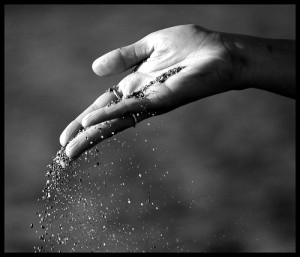 In 1978 country singer Kenny Rogers sang, “You got to know when to hold ‘em; know when to fold ‘em…” in his Grammy Award-winning song The Gambler. He was referring of course to success in playing poker, but this advice can be applied to the virtuous leader as well.
In 1978 country singer Kenny Rogers sang, “You got to know when to hold ‘em; know when to fold ‘em…” in his Grammy Award-winning song The Gambler. He was referring of course to success in playing poker, but this advice can be applied to the virtuous leader as well.
Many leaders struggle with the problems that come at them. Sometimes these problems are self-inflicted and other times they are imposed by others. But in any case, as a leader takes on more and more responsibility, as one works to achieve great projects and visions, the problems that a leader is faced with often become more complex and heavy.
In these circumstances, the virtues of magnanimity and humility can be a great source of strength for a leader. Author Stephen Covey wrote in The 7 Habits of Highly Effective People about a concept called the Circle of Influence and the Circle of Concern. Basically he explains that all leaders have things in their lives that are of concern to them, that vie for their attention and that they worry about. Some of the things in our Circle of Concern are things that we can control while others we cannot. The things that we can control and can actually do something about, he labels as our Circle of Influence. Visually you might imagine the Circle of Influence as a smaller circle within the larger Circle of Concern.
As leaders when we focus our energies and efforts towards things that we are concerned about but don’t actually have any direct influence over, we tend to become overwhelmed, paralyzed, and ineffective. The Circle of Concern becomes larger and the Circle of Influence becomes small. Conversely highly effective leaders are able to shrink the gap in size between their Circle of Concern and their Circle of Influence, by focusing their energies and efforts on the things that they actually have a real control or influence over.
So how can a leader “right size” their Circle of Influence within the Circle of Concern? How does a leader keep the gap between their Circle of Influence and their Circle of Concern from growing too unwieldy? How is it a leader will know when to hold ’em and when to fold ’em?
This is where the leadership virtues of magnanimity and humility come in. Magnanimity calls us to discover greatness in our personal dignity. Each of us is uniquely created and has unique gifts. Magnanimity calls us to discover our talents, to develop them, and to focus them in a particular way towards our mission. Magnanimity leads us to better understand more accurately our precise Circle of Influence. It also leads us to focus these gifts and talents on particular areas of Concern that we can truly add value to and exert influence over. Magnanimity enables us to “grab onto” those things we can bring greatness to and where our influence is fruitful.
At the same time humility helps us to realize that these gifts and talents are meant to be at the service of others, not simply ourselves. Humility helps us to recognize areas of personal weakness and the strengths of others. It gives us the capacity to shrink our Circle of Concern to those things that we actually can influence. It brings peace and energy to know that as leaders we can “let go” of worries and concerns that are truly outside our sphere of influence. We can come to realize that there are others whose gifts and talents can meet these concerns, and by which in fact they can exercise their own magnanimous leadership. The virtuous leader, the simultaneously magnanimous and humble leader, can thus truly maximize their effectiveness and the effectiveness of others. All they have to do is learn to grab on and let go.